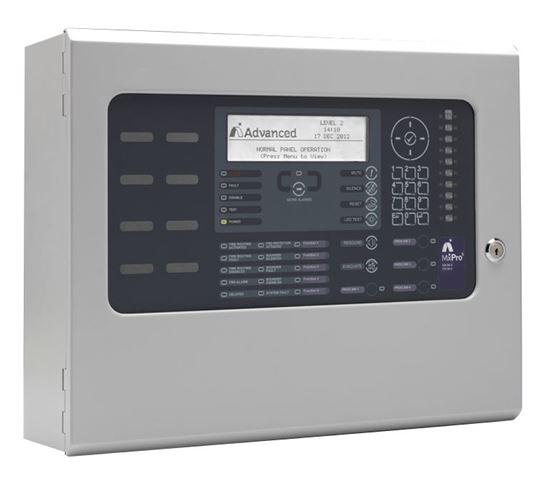Fire Alarm Systems
Fire Alarm Systems are essential to fire safety and are a requirement by UK law under the Regulatory Reform (Fire Safety) Order 2005. We install all fire alarm systems to BS5839-1 standards.
Comprehensive Fire System Services
Fire alarms play a crucial role in fire safety, serving as the established method of alerting individuals in case of a fire. As such, it is imperative that fire alarm installations are completed by fully certified and accredited professional fire alarm installers.
We are a NSI Gold Fire and BAFE SP203-1 certified company, committed to helping businesses and organizations safeguard their people and property. Our all-inclusive fire safety services ensure compliance with regulations while providing optimal protection.
Our range of services include installation, maintenance and repair of:
Commercial fire alarm systems are available in a number of types and categories. Understanding fire systems and their uses are essential to ensuring your people, assets, and company are protected.
According to UK law Regulatory Reform (Fire Safety) 2005, all commercial premises in the UK must be equipped with a working fire detection system. Your fire risk assessment will determine the category of system you require.
Conventional Fire Alarm System Overview
A conventional fire alarm system identifies activated devices (e.g., smoke detectors) through zone LEDs, whereas an addressable system provides exact locations on the control panel screen. Conventional systems are cost-effective options commonly used in small offices, public houses, apartment blocks, and shops.
All fire alarm systems need to comply with BS5839-1 to ensure the safest practice.
- Cost-effective: Conventional fire alarm systems are generally less expensive than addressable systems, making them an attractive option for small businesses and facilities with limited budgets.
- Simplicity: The design and installation of conventional fire alarms are relatively straightforward, which can result in quicker installation and easier maintenance.
- Familiarity: Conventional fire alarm systems have been around for a long time, making them a familiar option for both installers and users.
- Suitable for small buildings: Conventional fire alarm systems work well in small facilities where fewer zones and devices are required, such as small offices, shops, and flat blocks.
- Limited information: Conventional fire alarm systems provide less detailed information about activated devices compared to addressable systems. They only indicate the zone in which the alarm has been triggered, making it more difficult to pinpoint the exact location of the fire.
- Less flexible: Conventional fire alarms have limited customisation options and are less adaptable to changes in building layout or usage.
- Limited scalability: Conventional systems may not be suitable for large or complex buildings, as they can only handle a limited number of devices and zones.
- Increased potential for false alarms: Conventional fire alarm systems may be more prone to false alarms due to their less sophisticated detection methods.
- More complex wiring: Conventional fire alarm systems typically require more extensive wiring compared to addressable systems, as each device must be wired back to the main control panel. This can result in a more complex and time-consuming installation process.

Addressable Fire Alarm System Overview
Addressable fire alarm systems are designed for larger commercial buildings with more complex networked systems, such as large office buildings, hospitals, and hotels. They provide more intelligence, flexibility, scope of control, and speed of identification compared to conventional systems.
-
Precise location identification: Addressable systems provide detailed information on the exact location of an activated detector, allowing for quicker response and reduced “seek and search” time.
-
Scalability: Addressable fire alarm systems are highly scalable, making them suitable for large and complex buildings with multiple zones and devices.
-
Programmable features: Addressable systems can be programmed to control various equipment, such as lifts, ventilation systems, or access control, offering better management in case of a fire.
-
Reduced false alarms: The advanced detection methods used in addressable systems can help minimise false alarms by differentiating between actual fires and other sources of smoke or heat.
-
Easier maintenance: Addressable systems can identify the specific device that requires maintenance, reducing the time and effort needed for troubleshooting and repairs.
-
Flexible wiring: Addressable systems typically use loop wiring, which is more flexible and less complex than the wiring needed for conventional systems.
-
Higher initial cost: Addressable fire alarm systems are generally more expensive than conventional systems, both in terms of equipment and installation.
-
Complexity: The increased functionality and customisation options of addressable systems can make them more complex to install, program, and maintain.
-
Overkill for small buildings: Addressable systems might not be necessary for small buildings with fewer zones and devices, making conventional systems more cost-effective and suitable for such applications.
In summary, addressable fire alarm systems offer advanced features, precise location identification, and increased scalability, making them ideal for large or complex buildings. However, they come with a higher initial cost and may be more complex to install and maintain.

Wireless Fire Alarm System Overview
A wireless fire alarm system relies on radio signals instead of cabling to connect devices to the main control panel, making it a more flexible and less disruptive option for certain applications.
- Easy installation: Wireless fire alarm systems do not require extensive cabling and containment, making them easier and faster to install.
- Flexibility: Wireless systems can be more easily expanded or reconfigured as the building layout or occupancy changes.
- Minimal disruption: As no cabling is required, wireless systems cause less damage or disruption to a building’s structure during installation.
- Cost-effective: The elimination of cabling and containment costs can make wireless systems more economical in certain situations.
- Suitable for challenging environments: Wireless fire alarm systems are ideal for listed buildings, historical sites, or buildings with complex architecture where running cables may be difficult or aesthetically unappealing.
- Signal interference: Wireless systems rely on radio signals, which may be subject to interference from other electronic devices, causing potential communication issues between the devices and the control panel.
- Battery life: Wireless devices rely on batteries, which will need to be replaced periodically, increasing maintenance requirements.
- Limited range: Wireless systems have a limited signal range, which may require additional signal boosters or repeaters for larger buildings or sites with complex layouts.
- Compatibility: Some wireless fire alarm systems may have compatibility issues with devices from different manufacturers, making it essential to choose a system that meets your specific needs.
- Initial cost: While wireless systems can be more cost-effective in certain situations, the initial cost of wireless devices may be higher than their wired counterparts.










